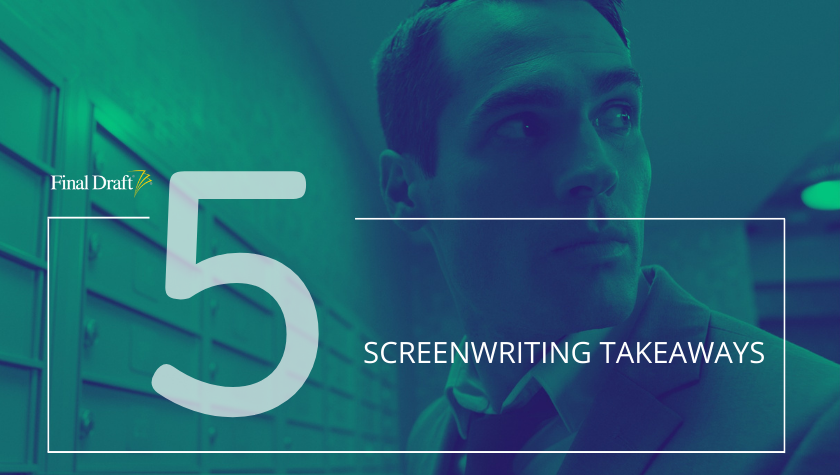5 Screenwriting Takeaways: Jane Campion makes an anti-cowboy masterpiece with ‘The Power of the Dog’
December 14, 2021
American cowboy movies come with much swagger, often violence, and usually plenty of guns. Jane Campion’s newest, The Power of the Dog, however, is a taught thriller with often disturbing imagery, but almost none of the above. Instead, it centers around Phil (a wonderfully tortured Benedict Cumberbatch) who lives in the shadow of a close childhood connection with a man named Bronco Henry, who taught him how to ride. This subversion of imagery is very purposeful under Campion's gaze, a native New Zealander, who offers a look at the cowboy rarely seen in popular culture — and it is beyond effective.
1. Is the idea of a lone cowboy toxic? Cumberbatch’s Phil is presented for much of the film as menacing. He is the ultimate lone cowboy. A man with little mercy (he’ll castrate a cow with no gloves — symbolic? You bet your balls it is). He’ll torment a woman with his guitar picking. He’ll rile up his cowboy crew with some swigs of beer and the meanest cut downs on his side of the creek. But unfortunately for Phil, he’ll also face the most difficult part of life when he opens up and allows himself to be vulnerable. A commentary on the history of toxic masculinity in America? Most likely, yes.
2. No place for a woman? Phil is not the only victim of toxic masculinity in this piece. In fact, it reverberates throughout, claiming victims left and right. Kirsten Dunst’s Rose becomes untethered almost as soon as she marries into the Burbank family, becoming smitten with George (Jesse Plemmons) when he helps in her restaurant unasked. But Phil is instantly unaccepting of Rose, tormenting her left and right, an unwelcome distraction from George’s ranch duties. Rose is not fond of Phil either, and some of the most captivating scenes in the movie involve their subtle rivalry. In a time of cruel elements being thrown in the direction of women from all around, t it seems Rose does not stand a chance.
3. The hope is with the youth. Scene-stealing Peter (Kodi Smit-McPhee) exudes subtle calm confidence underneath his awkward exterior. When Phil finally pays Peter mind (after torturing him mercilessly upon his arrival at the ranch), he’s unexpectedly captivated by Peter, who ensures he will not be victim to the same future as his predecessors; devoting himself to his studies to become a surgeon. Peter is a breath of fresh air both in the film, and for the time period, and there’s no denying the immense talent of Smit-McPhee.
4. Place as character. While the movie feels decidedly American in many ways (cowboy drawls are as thick as mud) the setting feels otherworldly. It is at once remote and desolate, and lush and rich all at once. Campion took to New Zealand to shoot the film which doubles as 1925 Montana. It nonetheless looks like its own world altogether. Production designer Grant Major built the Burbank mansion from the ground up. Inside the home is decidedly masculine: the Burbank male presence felt throughout, and Phil is ever-present, particularly when he initially refuses to attend a dinner party inside the home. "You can tell them I stink,” he crows. The world becomes even more difficult for Rose to penetrate no matter how hard George works to make Rose feel at home. The film's cinematography is breathtaking, outshining perhaps any other Netflix production before it. Cinematographer Ari Wegner balances a tightrope of close-ups that create unease such a Phil’s wounded hand, or the taught body of a horse ready to run, contrasted with the vast landscape that dwarfs the humans who attempt to eke out a life in the face of brutal nature. It’s an excellent complement to Campion’s pitch-perfect vision.
5. Open-ended puzzle. Campion’s ending is too good to give away here, but it asks many questions and hits upon the title. Phil is sometimes possessed by the breathtaking mountains in front of him. Peter sees what he sees. An open-mouthed howling dog. Phil is taken with his prodigy sharing his point of view. In the third act, the symbolism is again alluded to as Peter reads a Biblical passage: “Deliver my soul from the sword, my darling from the power of the dog.” Who carries that power often changes, and not always for the better.
Final Takeaway: Campion’s taught, engrossing thriller is earning much praise, and for good reason. It’s a movie so rich with visual details and symbolism it urges a second watching as the demise of possibility plays out so compellingly.
The Power of the Dog is now available on Netflix and in select theaters.
Written by: Lindsay Stidham
Lindsay holds an MFA in screenwriting from the American Film Institute. She has overseen two scripts from script to screen as a writer/ producer. SPOONER, starring Matthew Lillard (SLAMDANCE), and DOUCHEBAG (SUNDANCE) both released theatrically. Most recently Lindsay sold PLAY NICE starring Mary Lynn Rajskub. The series was distributed on Hulu. Recent directing endeavors include the Walla Walla premiering (and best screenplay nominated) TIL DEATH DO US PART, and the music video for Bible Belt’s Tomorrow All Today. Lindsay is currently working on an interactive romcom for the production company Effin' Funny, and a feature film script for Smarty Pants Pictures. Lindsay also currently works as an Adjunct Screenwriting Faculty member at USC’s School of Cinematic Arts. You can follow her work here: https://lindsaystidham.onfabrik.com/



